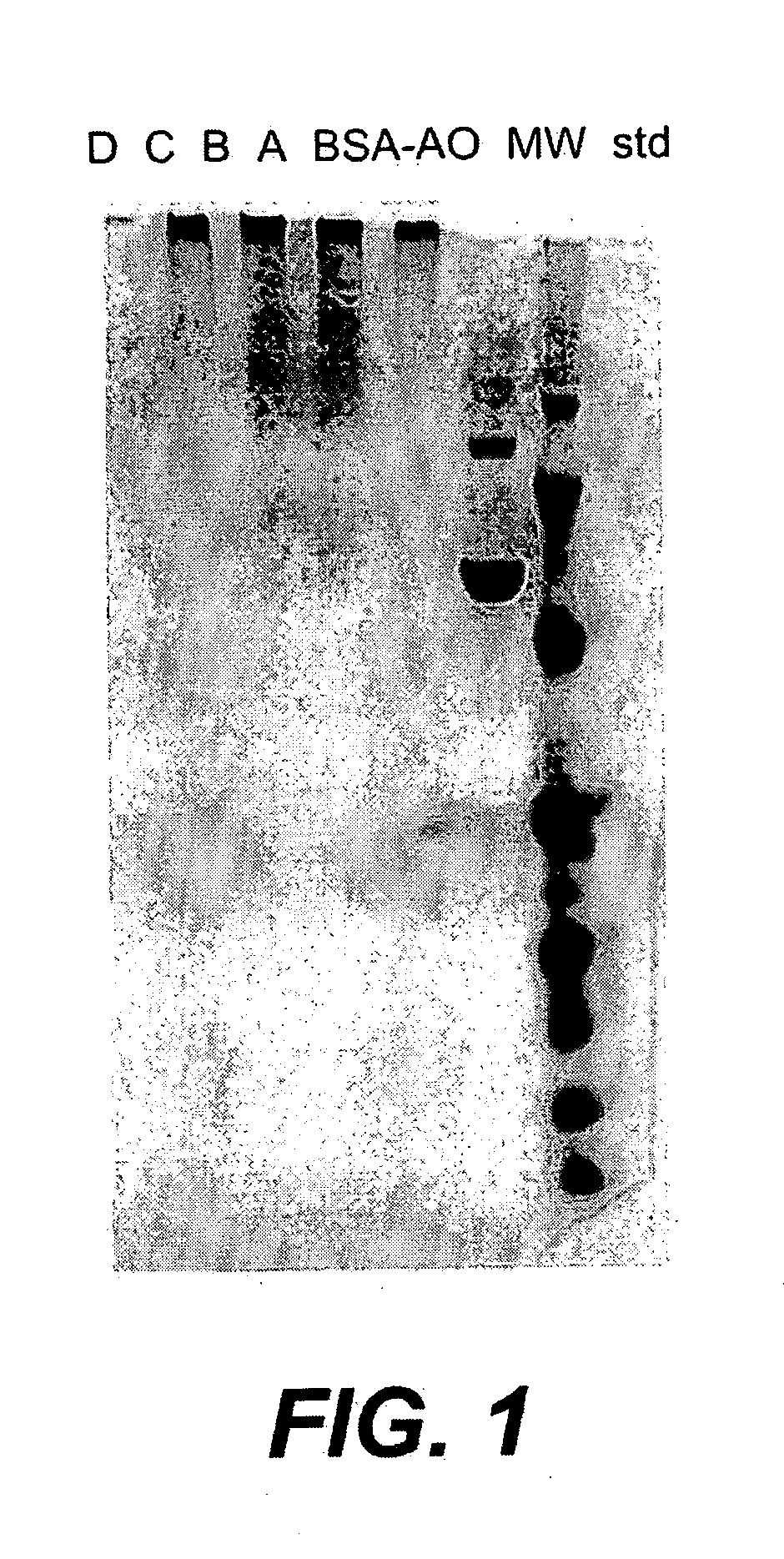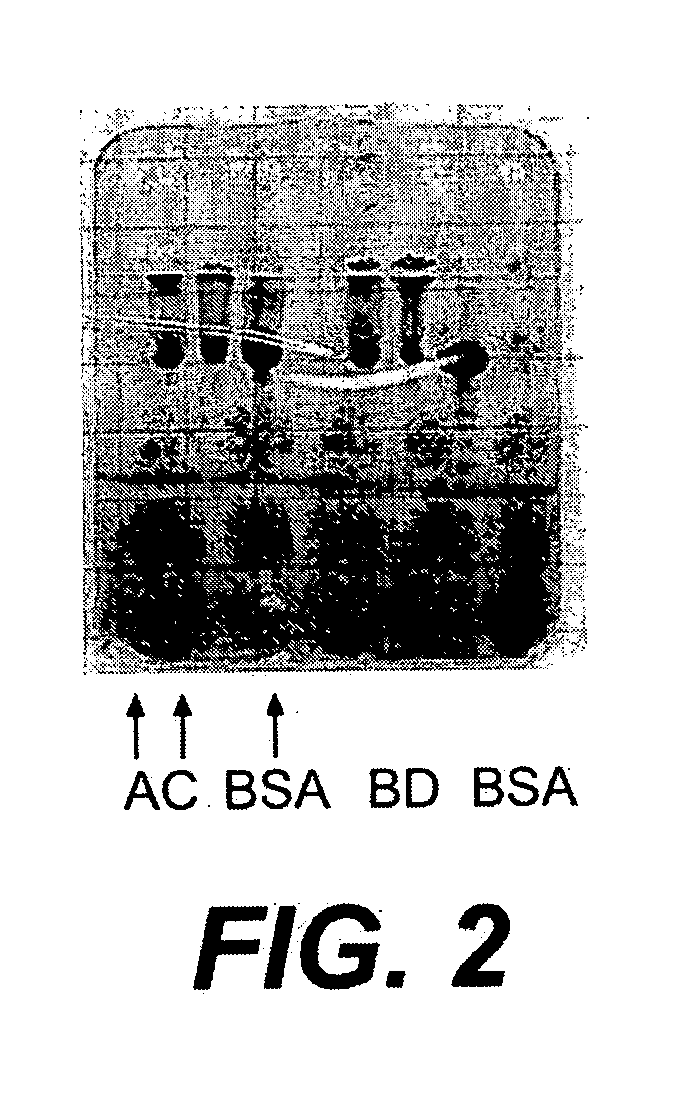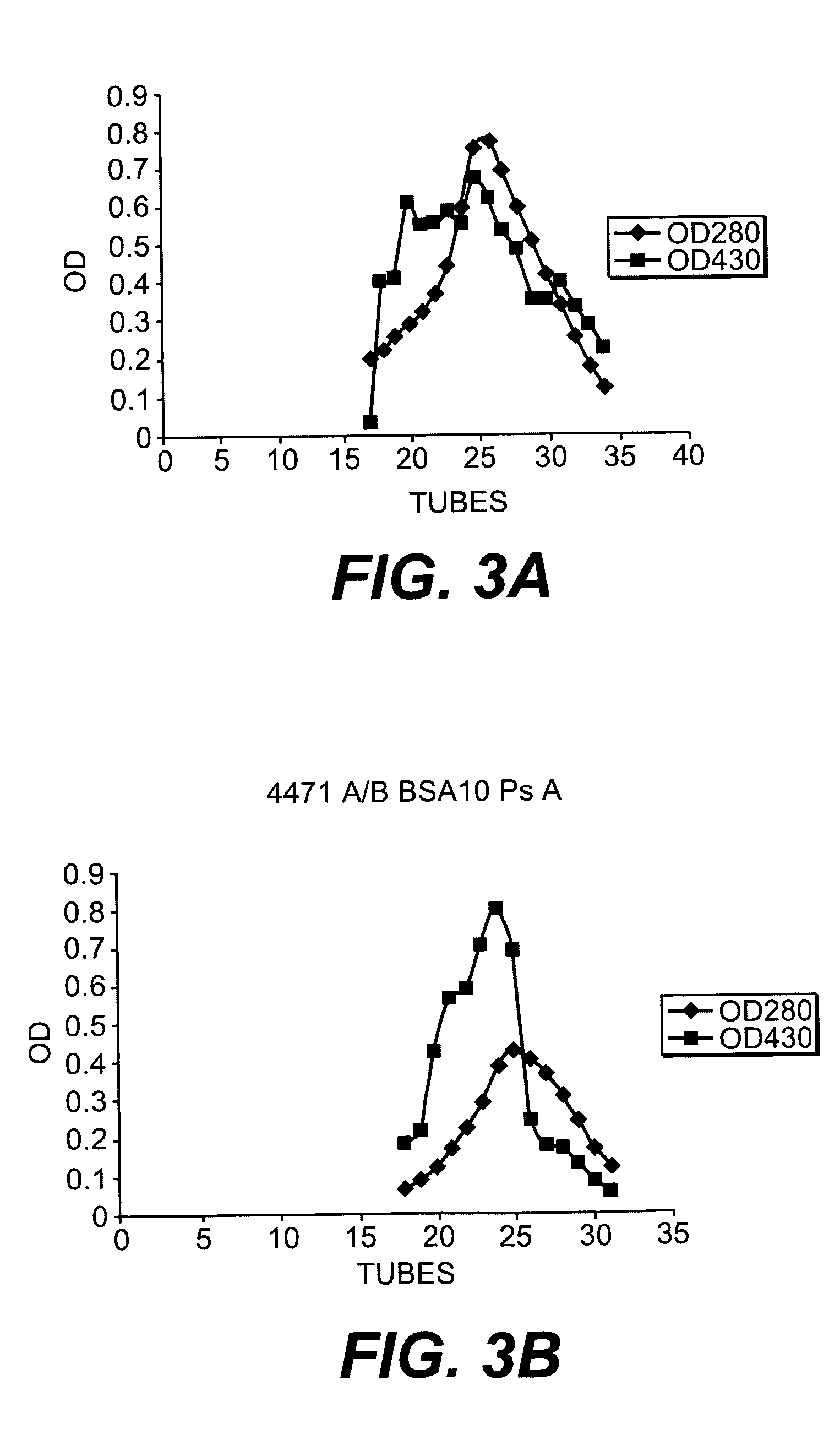Use of amino-oxy functional groups in the preparation of protein-polysaccharide conjugate vaccines
a technology of aminooxy functional groups and conjugates, which is applied in the direction of antibody medical ingredients, carrier-bound antigen/hapten ingredients, peptide sources, etc., can solve the problems of not being able to stimulate antibody formation, antigens such as polysaccharides cannot be properly processed by antigen presenting cells, and cannot stimulate high level or prolonged antibody responses
- Summary
- Abstract
- Description
- Claims
- Application Information
AI Technical Summary
Problems solved by technology
Method used
Image
Examples
example 1
Preparation of an Amino-Oxy Functionalized Protein
[0136] The following example illustrates the preparation of an amino-oxy functionalized protein that can be conjugated to a polysaccharide. Bovine serum albumin (BSA) was used as a model protein.
[0137] Bis(amino-oxy)tetraethylene glycol was linked to carboxyl groups on bovine serum albumin (BSA) with carbodiimide. Monomer BSA was prepared as described in (Lees et al., Vaccine 14: 190, 1996). Bis(amino-oxy)tetraethylene glycol (85 mg) (prepared by Solulink™, MW 361) was made up in 850 μl of 0.5 M HCl. 5 N NaOH was added to adjust to a pH ˜4.5. 1 ml of BSA mono (42.2 mg / ml in saline) was added. The reaction was initiated by the addition of 25 μl of freshly prepared EDC (1-(3-dimethylamino)propyl)-3-ethylcarbodiimide hydrochloride, 100 mg / ml in water). After approximately 3 hours, the solution was dialyzed overnight against saline at 4° C. The solution was then made up to 4 ml with saline and concentrated with an Amicon Ultra 4™ centr...
example 2
Preparation of an Amino-Oxy Derivatized Polysaccharide
[0138] The following example illustrates the preparation of any amino-oxy functionalized polysaccharide that can be conjugated to a protein, peptide, or hapten.
[0139] Pn14 (10 ml at 5 mg / ml in water) was activated by the addition of 40 mg of CDAP (100 mg / ml stock in acetonitrile), followed by triethylamine to raise the pH to 9.4. After approximately 2.5 minutes, 4 ml of 0.5 M hexanediamine (pH 9.4) was added. The reaction was permitted to proceed for about 2 hours. Excess reagent was then removed by dialysis against saline to yield amino-Pn14.
[0140] Amino-Pn14 was then reacted with excess NHS bromoacetate at pH 8 and dialyzed against saline in the dark at 4° C. The bromoacetylated Pn14 was concentrated by pressure filtration and then dialyzed against water.
[0141] Amino-oxy cysteamine was prepared from bis amino-oxy cystamine by TCEP reduction followed by ion exchange on a Dowex 1X-8 column as follows:
[0142] Bis(amino-oxy)cys...
example 3
Preparation of a BSA-Dextran Conjugate
[0145] The following example illustrates the preparation of a conjugate vaccine using an amino-oxy functionalized protein and an oxidized polysaccharide. Specifically, the amino-oxy functionalized BSA prepared in Example 2 was linked to oxidized dextran.
[0146] Dextran was oxidized using sodium periodate as follows: A 10 mg / ml solution of T2000 dextran (Pharmacia) was made to 10 mM in sodium acetate, pH 5 and then 10 mM sodium periodate (from a 0.5 M stock in water), and incubated at room temperature in the dark. At 1, 5, 10 and 15 min, an aliquot was removed, quenched by the addition of glycerol, and dialyzed against water in the dark. The final concentration of dextran was determined to be about 4.5 mg / ml.
[0147] The protein was conjugated to the polysaccharide as follows: 110 μl of each oxidized dextran preparation (1-15 min oxidation) was combined with 15 μl BSA-amino-oxy (0.5 mg each). After an overnight reaction in the dark at room temper...
PUM
| Property | Measurement | Unit |
|---|---|---|
| Immunogenicity | aaaaa | aaaaa |
Abstract
Description
Claims
Application Information
 Login to View More
Login to View More - R&D
- Intellectual Property
- Life Sciences
- Materials
- Tech Scout
- Unparalleled Data Quality
- Higher Quality Content
- 60% Fewer Hallucinations
Browse by: Latest US Patents, China's latest patents, Technical Efficacy Thesaurus, Application Domain, Technology Topic, Popular Technical Reports.
© 2025 PatSnap. All rights reserved.Legal|Privacy policy|Modern Slavery Act Transparency Statement|Sitemap|About US| Contact US: help@patsnap.com



